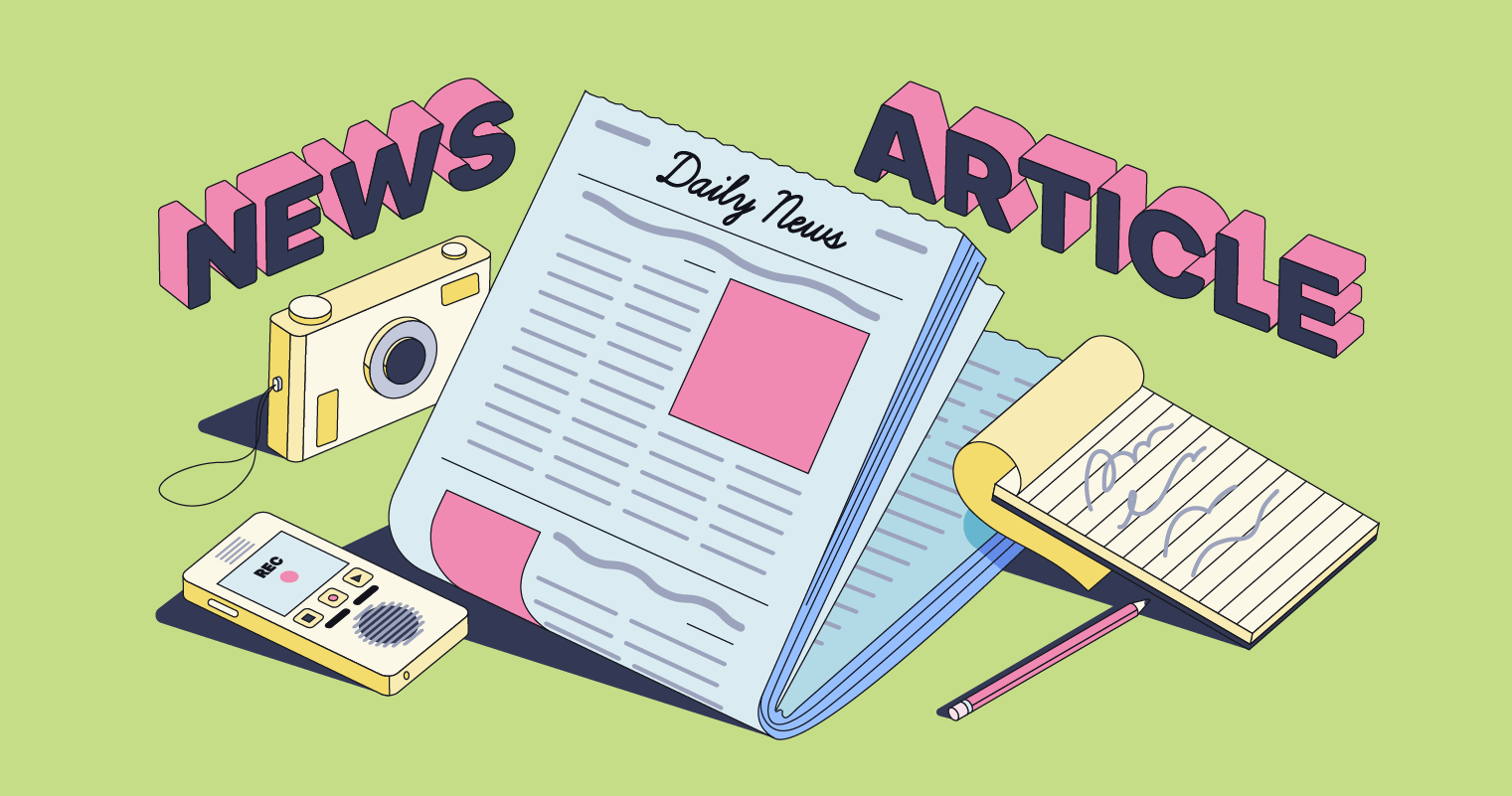The Basic Principles Of News Articles
The Basic Principles Of News Articles
Blog Article
What Does News Articles Do?
Table of ContentsNews Articles Fundamentals ExplainedWhat Does News Articles Mean?The Single Strategy To Use For News ArticlesTop Guidelines Of News ArticlesThe smart Trick of News Articles That Nobody is Discussing
Excellent understanding of various subjects offers students an one-upmanship over their peers. Although digital and social networks are readily easily accessible, we should not forget exactly how essential it is to review the newspapers. Parents have to try and instill the habit of checking out a paper as a daily routine to proceed the legacy of the revered print tool.Newspaper article likewise have at least one of the adhering to important characteristics family member to the desired target market: proximity, importance, timeliness, human rate of interest, curiosity, or repercussion. The relevant term journalese is sometimes used, normally pejoratively, to describe news-style writing. An additional is headlinese. Newspapers generally comply with an expository writing design.
Within these restrictions, information stories also intend to be thorough. Amongst the larger and more reputable papers, justness and balance is a major variable in providing information.
Newspapers with a worldwide audience, for instance, tend to utilize a more official style of composing. News Articles.; common style overviews include the and the United States Information Style Publication.
The 5-Minute Rule for News Articles
As a guideline, reporters will certainly not make use of a lengthy word when a brief one will certainly do. They use subject-verb-object construction and vibrant, energetic prose (see Grammar). They offer anecdotes, examples and metaphors, and they rarely depend on generalizations or abstract ideas. News writers try to avoid using the same word much more than once in a paragraph (in some cases called an "echo" or "word mirror").
Headlines in some cases omit the topic (e.g., "Leaps From Boat, Catches in Wheel") or verb (e.g., "Cat female fortunate"). A subhead (additionally subhed, sub-headline, subheading, caption, deck or dek) can be either a subservient title under the primary headline, or the heading of a subsection of the article. It is a heading that comes before the primary text, or a team of paragraphs of the primary text.

Extra signboards of any of these types might appear later on in the post (especially on succeeding pages) to entice more analysis. Such billboards are additionally utilized as pointers to the post in other areas of the publication or website, or as advertisements for the item in other magazine or websites. Common framework with title, lead paragraph (summary in vibrant), other paragraphs (information) and contact info.

Example of a hard-lead paragraph NASA is suggesting one more area project. The agency's budget demand, introduced today, consisted of a plan to send another goal to the Moon. This moment the company wants to establish a long-term center as a jumping-off place for other space experiences. The spending plan demands about $10 billion for the job.
An "off-lead" is the second most vital front page information of the day. To "bury the lead" is to start the article with history information or information of secondary value to the readers, requiring them to review more deeply right into an article than they must have to in order to discover the vital factors.
The Definitive Guide for News Articles
Usual usage is that one or 2 sentences each create their very own paragraph. Reporters usually describe the organization or structure of a newspaper article as an upside down pyramid. The crucial published here and most interesting elements of a story are put at the beginning, with supporting info complying with in order of lessening relevance.
It enables people to check out a topic to only the depth that their interest takes them, and without the imposition of details or nuances that they could consider irrelevant, but still making that information available to more interested readers. The inverted pyramid framework additionally makes it possible for write-ups to be cut to any type of approximate length during layout, to suit the room readily available.
Some writers begin their stories with the "1-2-3 lead", yet there are numerous kinds of lead available. A twist can refer to several things: The last tale in the news program; a "delighted" story to finish the program.
Longer posts, such as magazine cover posts and the pieces that lead the inside areas of a newspaper, are recognized as. Feature tales differ from straight information in several methods.
Fascination About News Articles
The reporter frequently information communications with interview subjects, making the piece a lot more individual. A feature's first paragraphs typically my response connect an interesting moment or occasion, as in an "unscientific lead". From the details of an individual or episode, its sight quickly broadens to abstract principles concerning the tale's topic. The area that signals what a feature has to do with is called the or billboard.

The Editor's Tool kit: A Reference Overview for Beginners and Professionals (2001) Allan M. Siegal and William G. Connolly. The New York Times Handbook of Style and Usage: The Authorities Style Overview Used by the Writers and Editors of the Globe's Most Reliable Newspaper (2002) M. L. Stein, Susan Paterno, and R.
Report this page